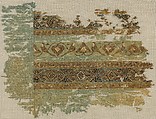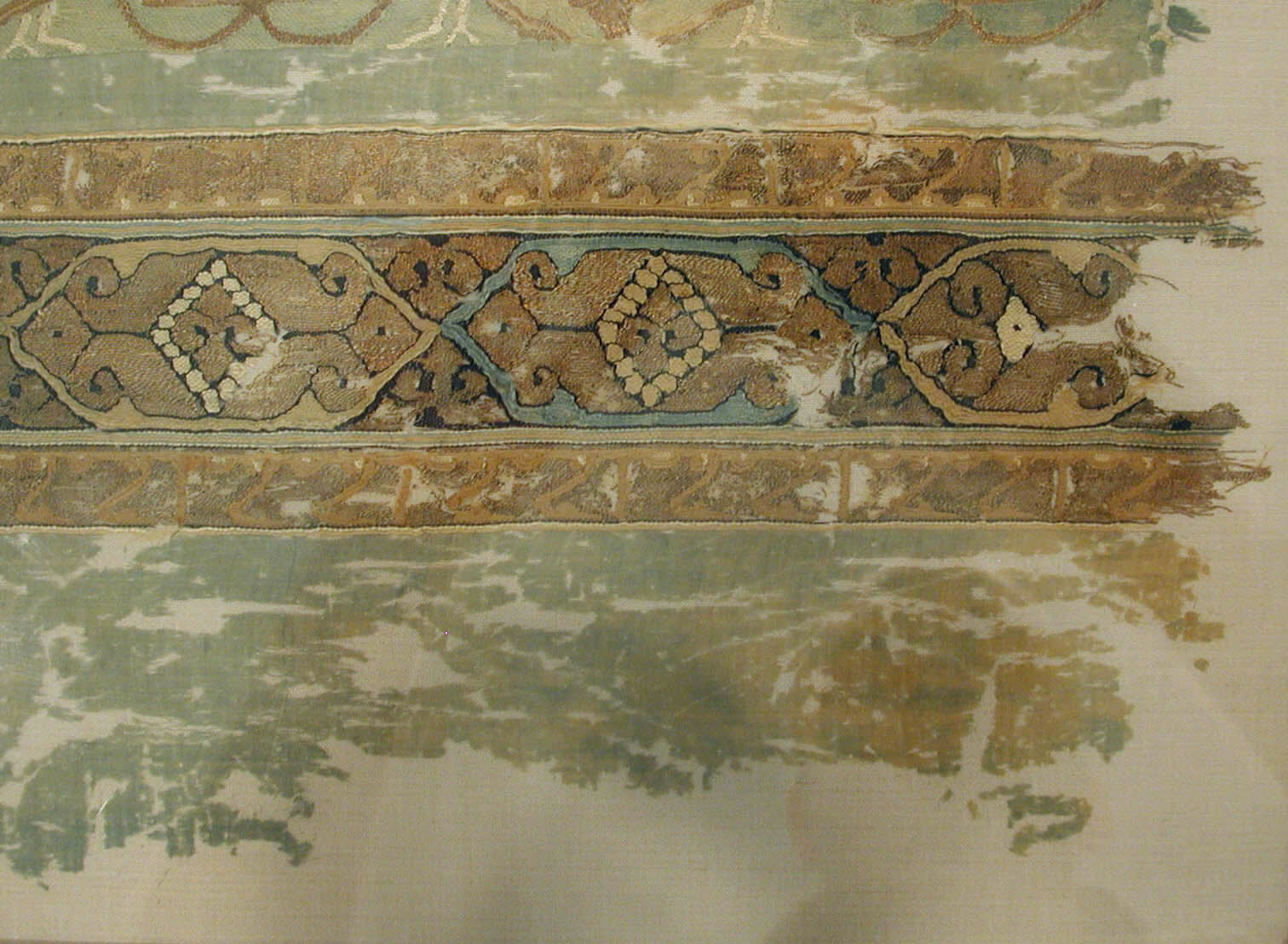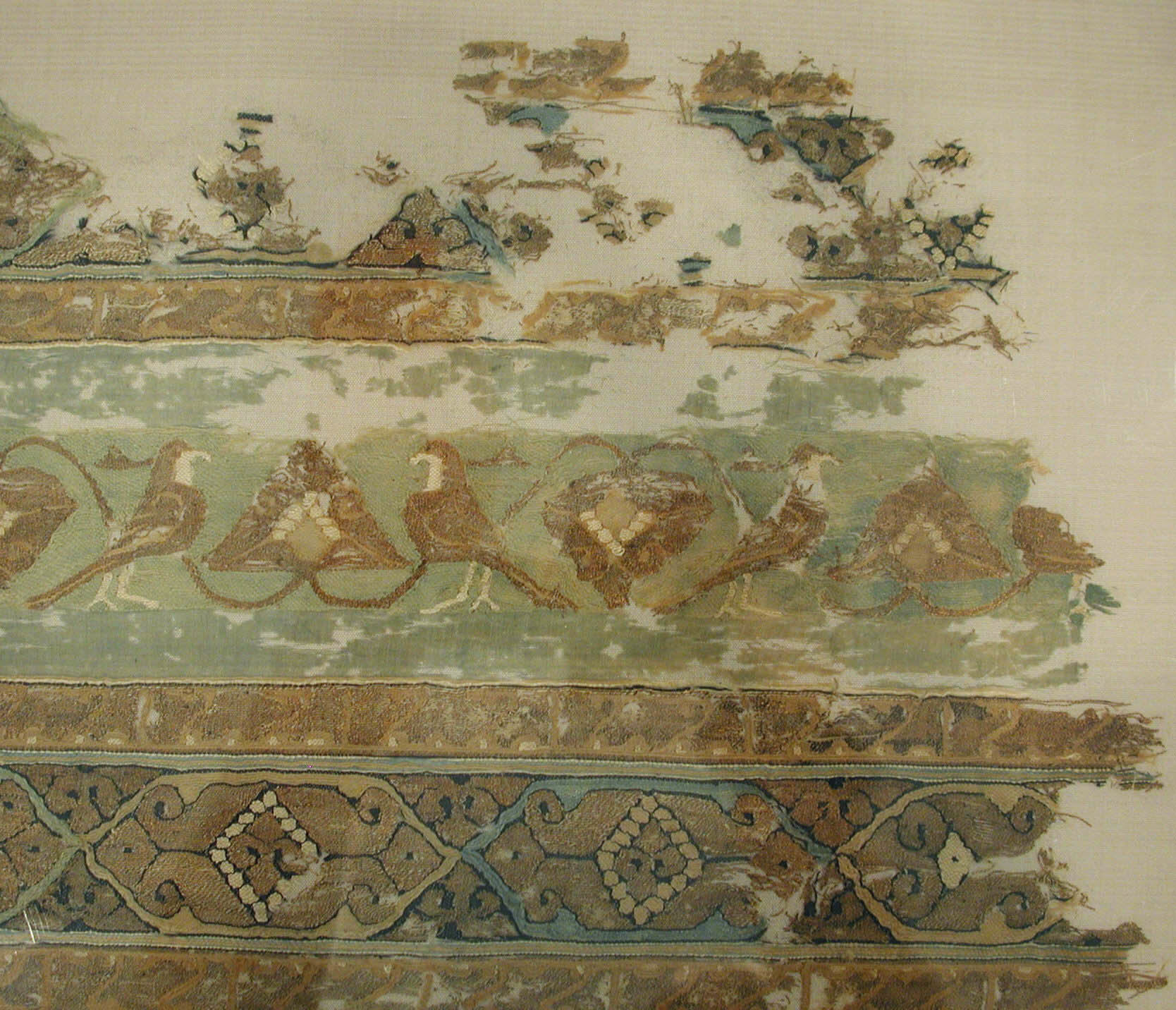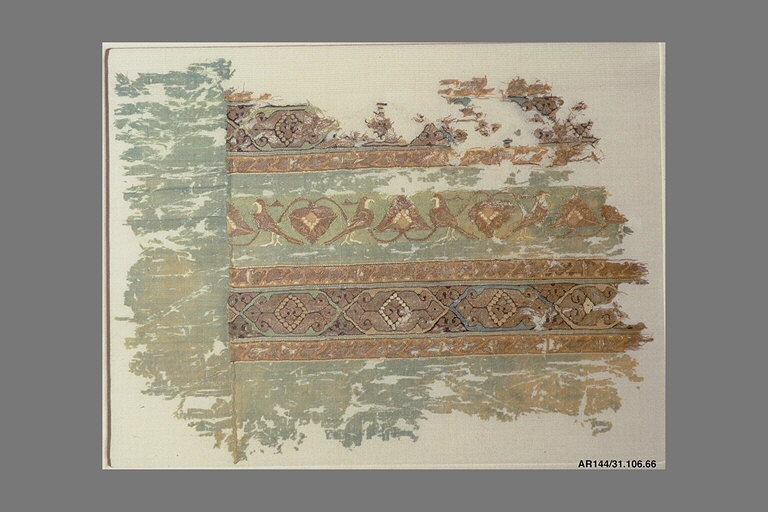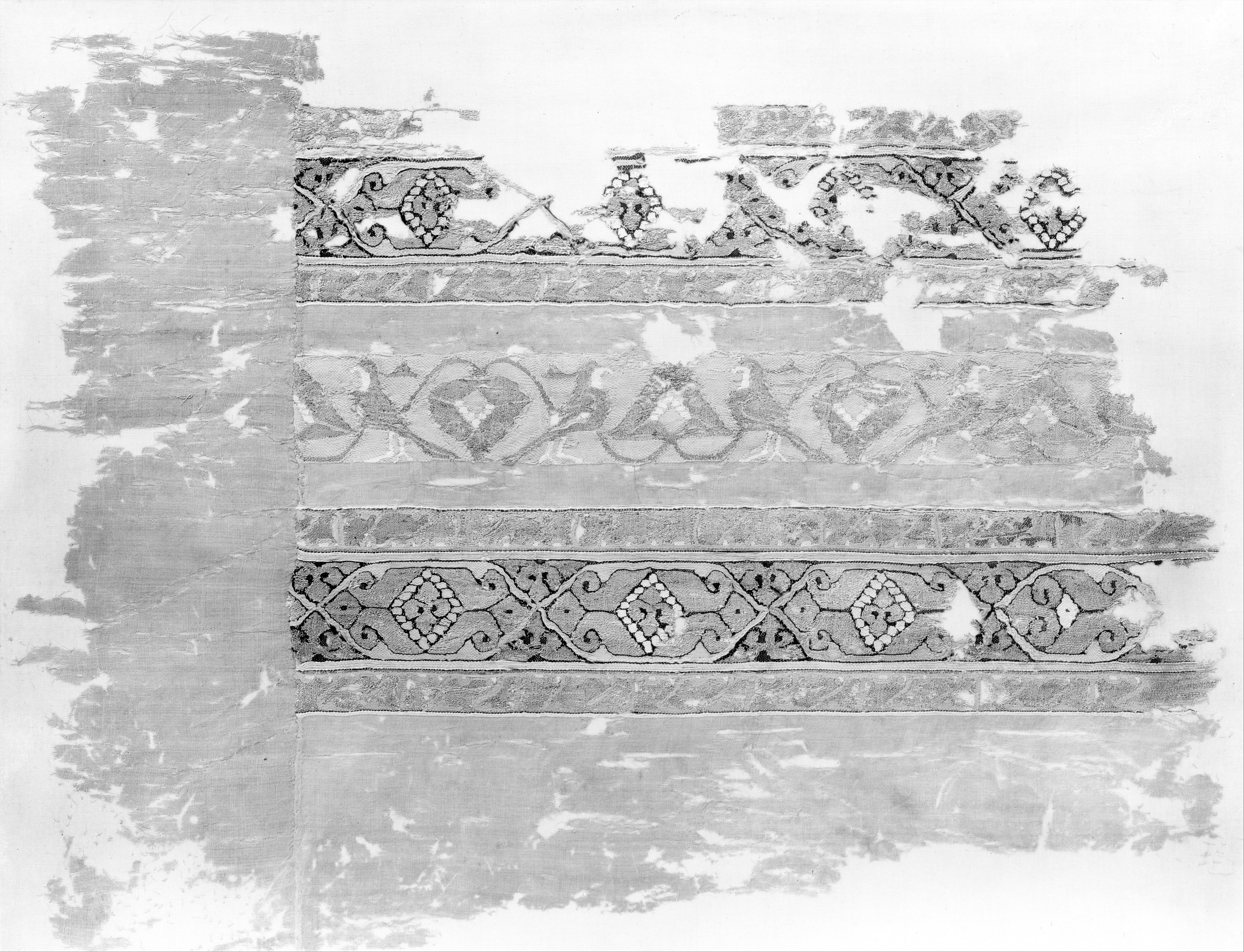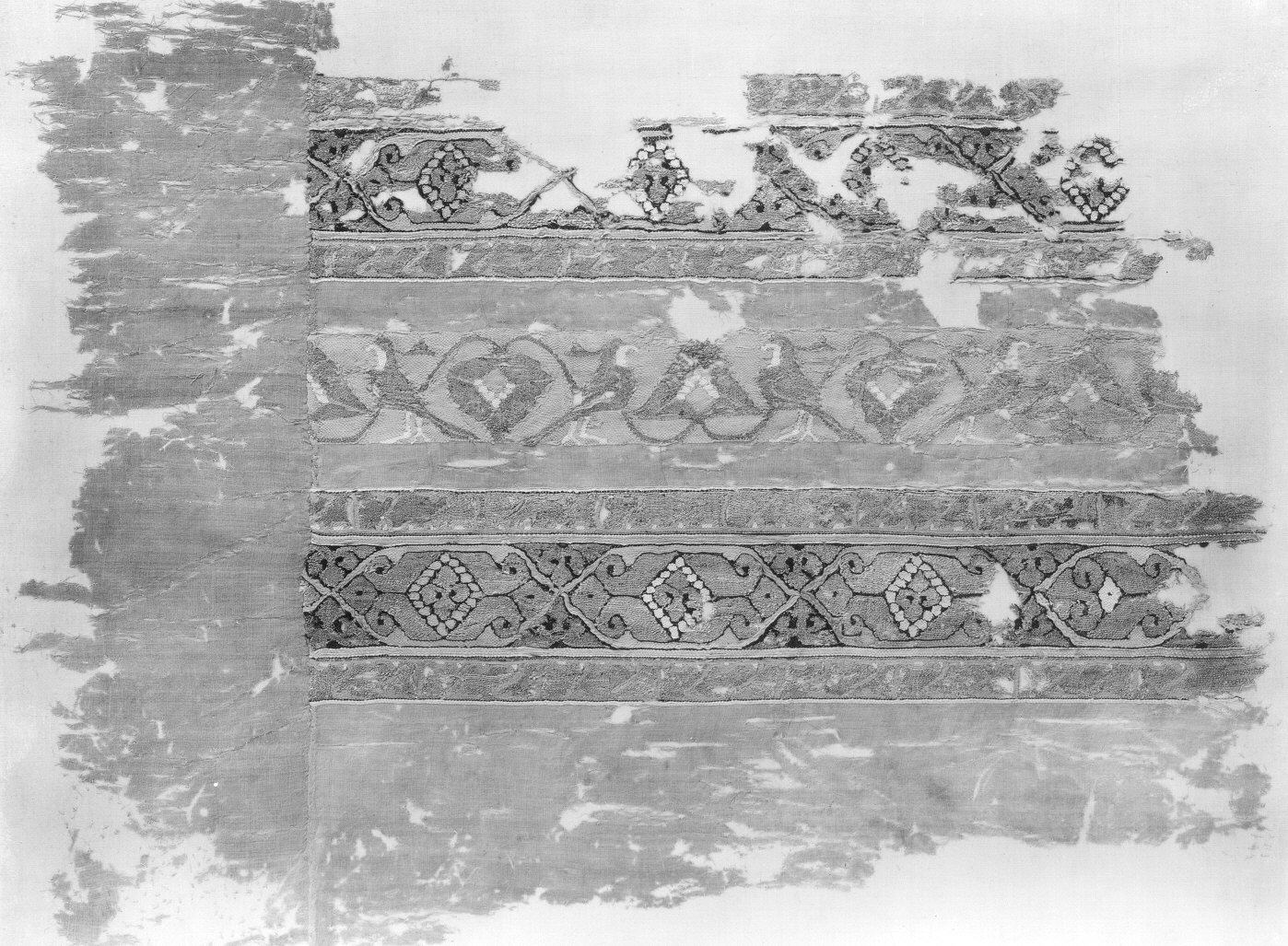Tiraz Fragment
Flax, from which linen fibers were made, was the main cash crop of Egypt during the Fatimid period, and the trade of linen helped sustain the economy. The court gave sumptuous fabrics like this one as ambassadorial gifts, with the caliphal treasuries known for housing fabrics of remarkable splendor. Surviving Fatimid textiles are often inscribed or adorned with ornamental bands featuring rows of animals and other motifs. On this fragment, the central theme consists of a series of birds flanking reciprocal half-palmettes, all of which are linked by a scrolling vine woven in silk. Mirroring this rhythmic alternation are registers filled with cartouches, each containing an abstracted arabesque. The monotonous repetition is broken by the color of their respective backgrounds, which flows from pastel blue to yellow and green.
Due to rights restrictions, this image cannot be enlarged, viewed at full screen, or downloaded.
This artwork is meant to be viewed from right to left. Scroll left to view more.
